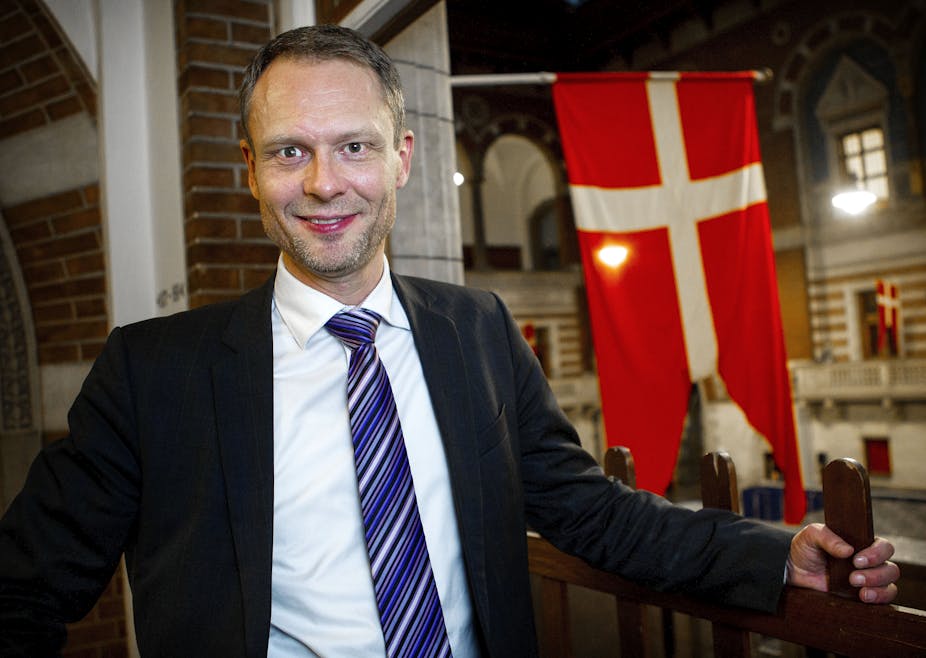Denmark has traditionally been viewed as a reluctant European member. Or as belonging to an alternative European community of Nordic states promoting a set of values more consistent with the social-democratic Scandinavian welfare state than with either the more conservative continental European model or its more classical liberal Anglo-Saxon alternative.
In Denmark, this view has been accompanied by the perception of Denmark as a bridge-builder between Europe and the Nordic countries. This was particularly the case in the two decades preceding Swedish and Finnish EU membership in the mid-1990s when Denmark was the only Nordic EU member state.
But these days Denmark’s relationship with the EU has been normalised. True, Danes are consistently among the Europeans expressing the greatest level of trust in their national political institutions, and the three opt-outs from European Union politics on monetary politics, defence and home and justice affairs continue to restrict Danish engagement in Europe.
However, at the same time Danes are among the Europeans most vigorously supporting continued membership of the EU and Danish politicians and civil servants, basing their strategies and actions on a “permissive” understanding of the opt-outs, have found ways of continuing a strong engagement with European developments in general and playing an active role in selected policy areas such as climate and labour market policies.

Even more important in the context of the 2014 European Parliament elections, Danish public debates over Europe have been “Europeanised”. As in Germany, the United Kingdom and elsewhere, Danish policy-makers, European Parliament candidates and the electorate are discussing issues such as “welfare tourism”, the democratic and regulatory consequences of continued EU integration, and the (in)ability of European Union institutions to solve the economic crisis. For this reason, the traditional “Yes to Europe” versus “No to Europe” divide in Danish politics has now almost disappeared. Most parties and candidates support continued EU membership and express a relatively strong support for some aspects of European integration but voice reservations towards other parts of the integration process.
This development has important consequences for the success and failure of parties and political movements in the 2014 EU election. The “No Movement” is traditionally left-leaning and based on a political platform viewing the creation of a European marketplace as a threat to welfare states. That and a distrust for the prospect of an ever-closer union developing into a continental great power with its own military capabilities which contrasts with the traditional Nordic values of détente and negotiation. Having occupied a central position in Danish debates over European developments in the 1970s, 1980s and early 1990s, it is now largely marginalised as a voice in the public debate and as an electoral force.
Recent polls show that for the first time since the instigation of direct elections to the European Parliament in 1979, the “No Movement” might fail to gain a seat in the 2014 election. Only the decision of the popular left-wing Red-Green Alliance not to run for the European Parliament elections and instead lend its support to the “No Movement” leaves it with a fighting chance.

In, but eurosceptic
In contrast, the Danish People’s Party is a success story when it comes to European politics. Growing out of the anti-establishment, anti-tax, anti-immigrant Progress Party, the Danish People’s Party has increasingly cultivated a political brand as a defender of the “little man” against elite follies, excessive bureaucracy and threats to Danish culture and economic welfare. This has allowed the party to effectively tap into Danish and European debates about welfare tourism and European regulation and bureaucracy. Recent polls show that the party may become the largest Danish party at the EU election gaining as much as 25% of the vote.
The two big political parties of Danish national politics, the Social Democrats and the Liberals, Venstre, are both projected to receive around 20% of the vote with the Liberals likely to gain a few percentage points more than their Social Democratic counterparts. Both parties have opted for competent but unspectacular candidates with some name recognition but creating little enthusiasm. The Social Democrat’s top candidate Jeppe Kofod focuses on unemployment and economic crisis, whereas the Liberal Ulla Tørnæs focuses on free-trade and the economic and regulatory conditions for private companies.
None of the smaller parties are likely to gain a seat. The Socialist People’s party will suffer the greatest defeat. Gaining 16% of the vote and two seats in the 2009 elections when the party was at the peak of its popularity, it has suffered a turbulent past three yearsand is hovering around 5% in the polls. The Conservatives have been unable to recover from a massive defeat of the Danish national 2011 parliamentary election cutting its support to less than 5%. The Liberal Alliance, also at around 5% runs with a group of relatively unknown candidates promoting free trade and reduced EU bureaucracy. Finally, the Social Liberals, currently faring slightly better at the polls than the other small parties, runs on a platform combining individual and economic freedom with a focus on climate and the environment.
Citizens in 28 countries will go to the polls to vote for the European Parliament this month. To test sentiment across the EU, The Conversation has assembled a team of experts from across Europe to write about how the election is playing in their countries.

